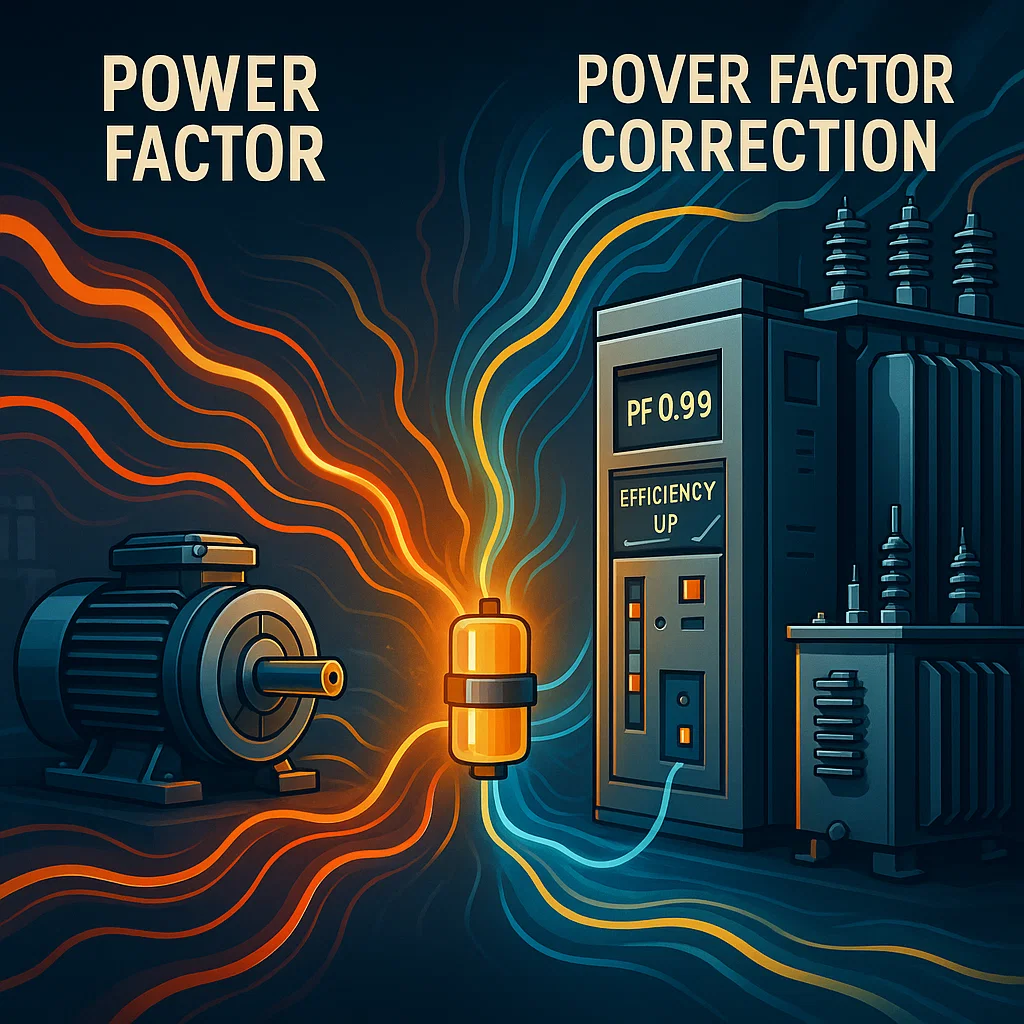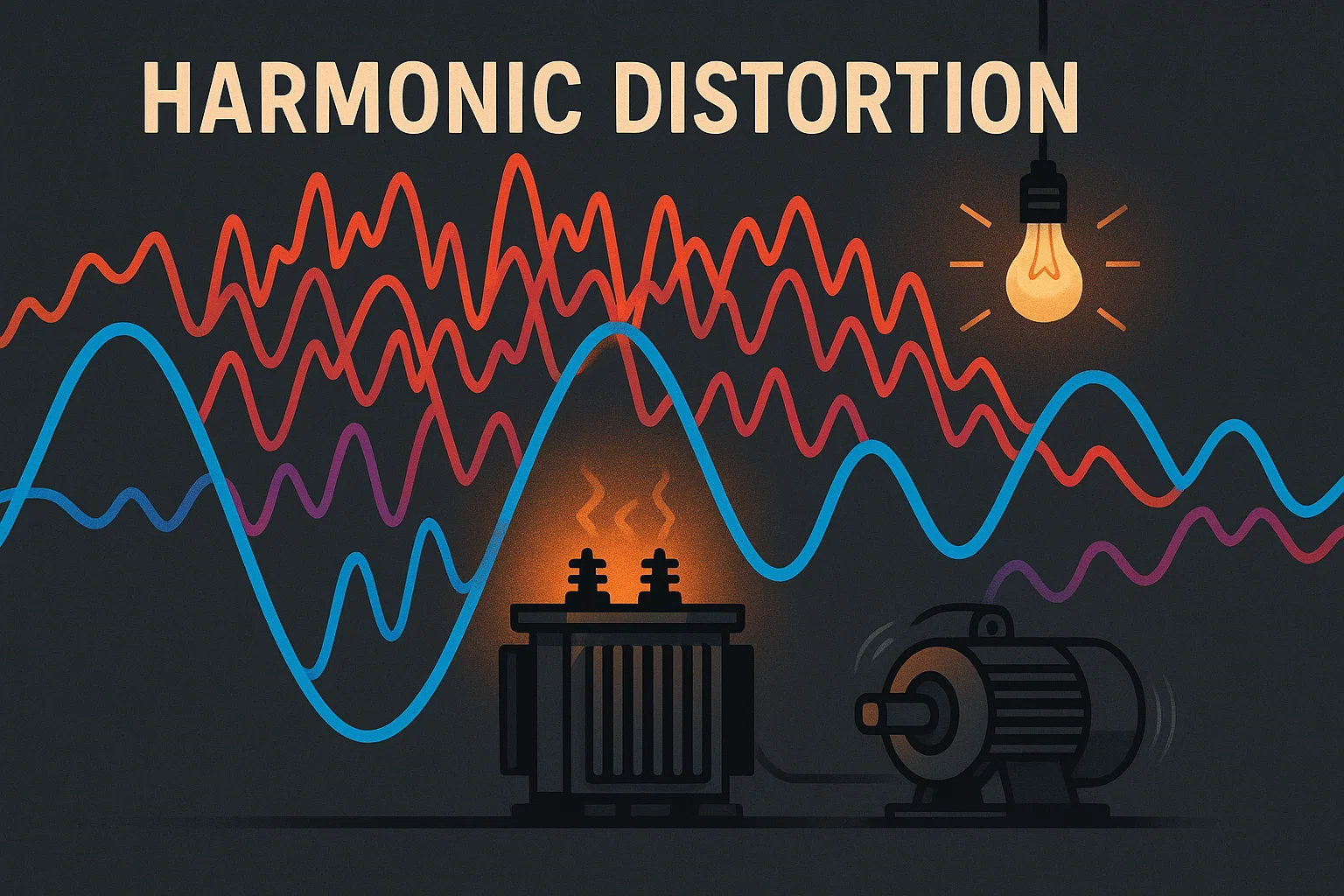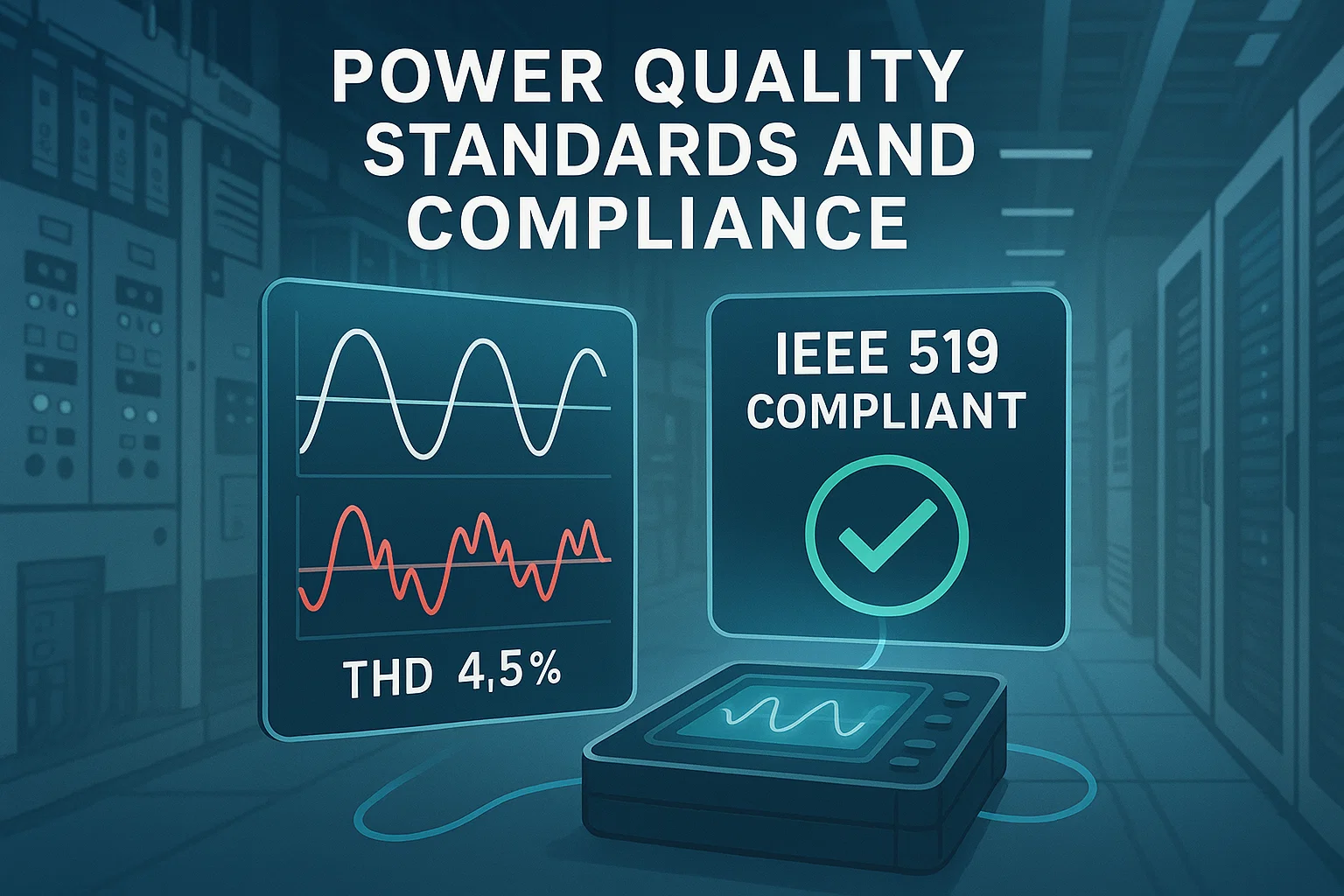Understanding Power Factor and Its Impact on Industrial Operations
Learn how power factor affects energy efficiency and equipment performance in industrial facilities, and discover practical solutions for power factor correction.

In the intricate world of industrial operations, optimizing electrical systems is paramount not just for efficiency, but for cost savings and equipment longevity. One critical, yet often misunderstood, aspect is power factor. Understanding and correcting a low power factor can unlock significant benefits for any facility.
What is Power Factor?
At its core, power factor is a measure of how effectively electrical power is being converted into useful work. Technically, it's the ratio of real power (kW – the power that performs actual work) to apparent power (kVA – the total power supplied to the circuit). A power factor of 1.0 (or unity) signifies that all supplied power is being used to do useful work, with no wasted energy.
A low power factor, typically below 0.9, indicates that a significant portion of the electrical energy is being used to create and sustain magnetic fields in inductive loads, rather than being converted into mechanical or thermal energy. This 'reactive power' doesn't do any useful work but still flows through your electrical system, consuming capacity.
Why Power Factor is Critical for Industrial Operations
- Increased Energy Costs: Utilities often impose penalties or surcharges on customers with low power factors (e.g., below 0.9 or 0.95). These penalties are designed to compensate the utility for the increased current they must supply to meet your facility's apparent power demands, even if that power isn't doing useful work. Improving your power factor directly reduces these charges.
- Reduced Electrical System Capacity: A low power factor means higher current draw for the same amount of real power. This excess current consumes valuable capacity in your transformers, switchgear, and cables, limiting your ability to add new loads without costly upgrades. By improving power factor, you "free up" this capacity.
- Equipment Overheating and Reduced Lifespan: The higher currents associated with a low power factor lead to increased heat generation in electrical components (known as I²R losses). This elevated thermal stress can degrade insulation, shorten the lifespan of motors, transformers, and other equipment, and lead to premature failures.
- Voltage Drop and Instability: High reactive currents can cause significant voltage drops across the distribution system, especially over long distances. This can lead to under-voltage conditions at equipment terminals, affecting performance, reducing efficiency, and potentially causing malfunctions.
Common Causes of Low Power Factor
Industrial facilities are particularly susceptible to low power factor due to the prevalence of certain types of electrical loads:
-
Inductive Loads: The most common culprits are devices that use coils of wire to create magnetic fields. This includes:
- Electric motors (especially under-loaded or older models)
- Transformers
- Induction heating equipment
- Fluorescent and HID lighting ballasts
-
Non-Linear Loads: Modern electronic equipment that draws current in non-sinusoidal waveforms can also contribute to a poor power factor and introduce harmonic distortion. Examples include:
- Variable Frequency Drives (VFDs)
- Uninterruptible Power Supplies (UPS)
- Rectifiers and battery chargers
- LED lighting with poor drivers
- Intermittent Heavy Loads: Equipment like welders or arc furnaces draw large, fluctuating currents that can momentarily depress the power factor across the facility.
Effective Power Factor Correction Methods
The goal of power factor correction (PFC) is to compensate for reactive power by introducing an equal and opposite amount of reactive power into the system, thereby bringing the power factor closer to unity. The primary methods include:
Capacitor Banks
These are the most traditional and cost-effective method. Capacitors generate leading reactive power, which directly offsets the lagging reactive power produced by inductive loads. Capacitor banks can be:
- Fixed: Installed to correct a constant base load.
- Automatically Switched: Utilize a controller to connect or disconnect individual capacitor steps in response to changes in the facility's load, maintaining an optimal power factor.
Active Power Factor Correction (APFC) Systems
APFC systems use power electronics to dynamically inject reactive power into the system in real-time. They are ideal for facilities with rapidly changing and highly variable loads, or those with significant non-linear loads. APFC systems often provide additional benefits like harmonic filtering, which capacitor banks alone cannot address.
Harmonic Filters
For systems with significant harmonic distortion (often caused by non-linear loads like VFDs), harmonic filters (passive or active) may be necessary in conjunction with or instead of capacitor banks. Harmonics can interfere with PFC capacitors and even cause them to fail.
Implementing Power Factor Correction: Best Practices
- Conduct a Comprehensive Power Quality Audit: Before implementing any solution, a detailed analysis of your facility's electrical system, load profile, and existing power factor is essential. This data-driven approach ensures the right solution is chosen.
- Accurate Sizing and Placement: Proper sizing of PFC equipment is crucial to avoid over-compensation, which can lead to a leading power factor (also penalized by utilities) and potential system resonances. Strategic placement, often closer to the larger inductive loads, is also important.
- Consider Harmonic Distortion: If your facility has a high percentage of non-linear loads, standard capacitor banks might be damaged by harmonics. In such cases, detuned capacitor banks (with series reactors) or active harmonic filters are more appropriate.
- Continuous Monitoring and Maintenance: Power factor correction equipment requires periodic inspection and maintenance to ensure optimal performance. Continuous monitoring helps in identifying issues and adjusting settings as loads change over time.
- Consultation with Experts: Given the complexities involved, partnering with power quality specialists (like PowerWadi's technical team) can ensure an effective, safe, and compliant PFC solution.
Expected Benefits of Improved Power Factor
- Significant Cost Savings: Elimination of utility power factor penalties and a reduction in overall demand charges.
- Enhanced Electrical System Capacity: Freed-up capacity allows for expansion or improved reliability of existing loads without infrastructure upgrades.
- Extended Equipment Lifespan: Reduced thermal stress on electrical components, leading to fewer breakdowns and lower maintenance costs.
- Improved Voltage Stability: More stable voltage levels throughout the facility, optimizing equipment performance.
- Reduced Carbon Footprint: Greater energy efficiency translates to lower energy consumption and a positive environmental impact.
💡 Pro Tip: For large, individual inductive loads like motors, consider installing smaller, localized capacitor banks directly at the motor terminals. This approach minimizes current draw on feeder cables and transformers upstream, maximizing their efficiency and reducing losses across the entire distribution network.
By actively managing and improving your power factor, industrial operations can achieve greater energy efficiency, reduce operating costs, and enhance the reliability and lifespan of their critical electrical infrastructure.


